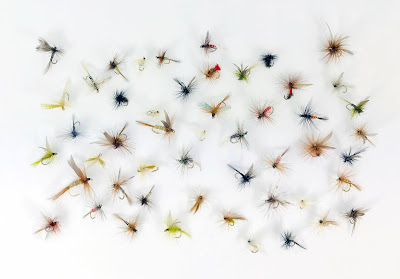Nothing beats the excitement of watching a trout take your dry fly, whether that's a fish head and tailing, splashing or sipping off the surface. However, there is a lot of uncertainty as to how long you should let your fly sit on top of the water, without a take, before you re-cast your fly line?
 |
| Stillwater 50 Assorted Dry Flies |
In contrast, if fish can be seen dimpling in calm conditions, then the chances are these trout will be cruising close to the surface. If you now adopt the continuous casting mentioned above, then you are likely to spook some of the fish with this continued disturbance. In this scenario, you're better off trying to plot the path of rising fish and place the fly a little way ahead of them. In such circumstances, your fly might be on the surface for 20 or more seconds. Equally, where lots of trout are seen rising, say to a fall of terrestrials, then it can be worth casting your dry fly out and leaving it to its own devices for 30 or 40 seconds.
 |
| Loon Floatant and Sinkant |
If you observe trout patrolling a particular beat while rising, this requires that you set up an ambush.
Wait for the fish to be a safe distance away before placing a fly into the path where you judge the trout will pass. It might be some minutes before the fish comes ambling along on its circuit so your fly will remain at the surface for well over a minute. With this, be mindful of greasing most of the leader so it floats for a clean, swift lift if a trout takes the fly. Only the tippet section should be de-greased.
 |
| Rio Powerflex Tippet Material |
With a bit of thought and careful consideration about where and when to cast your dry fly, you will get your fly/flies in the trout's window of vision more often. It is then up to you to get your timing right and to strike at the appropriate time to set the hook.
This article was brought to you in association with Trout Fisherman Magazine.





Comments
Post a Comment